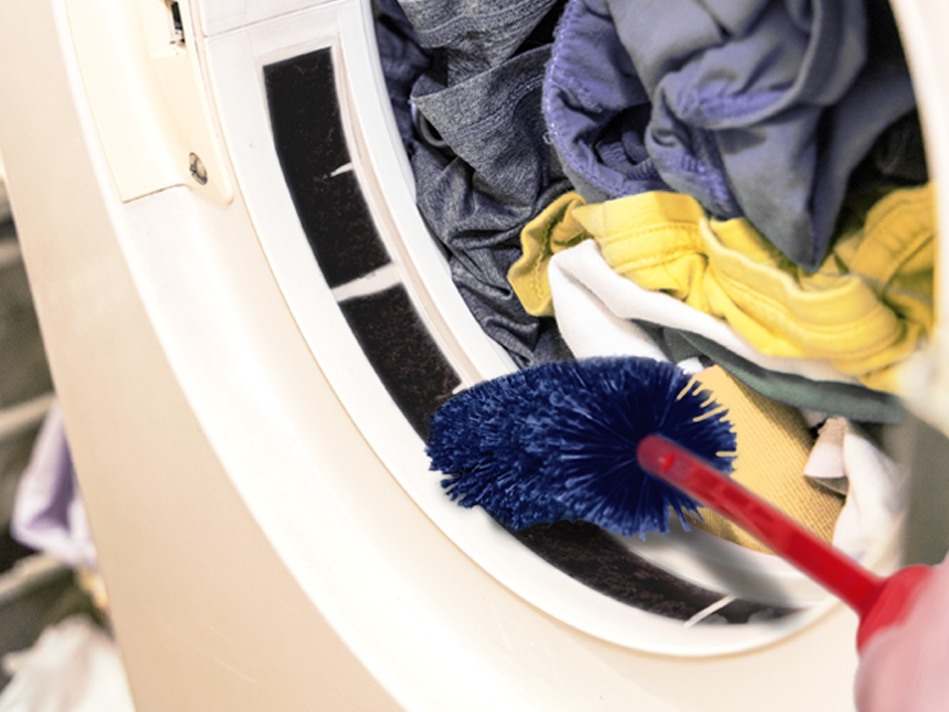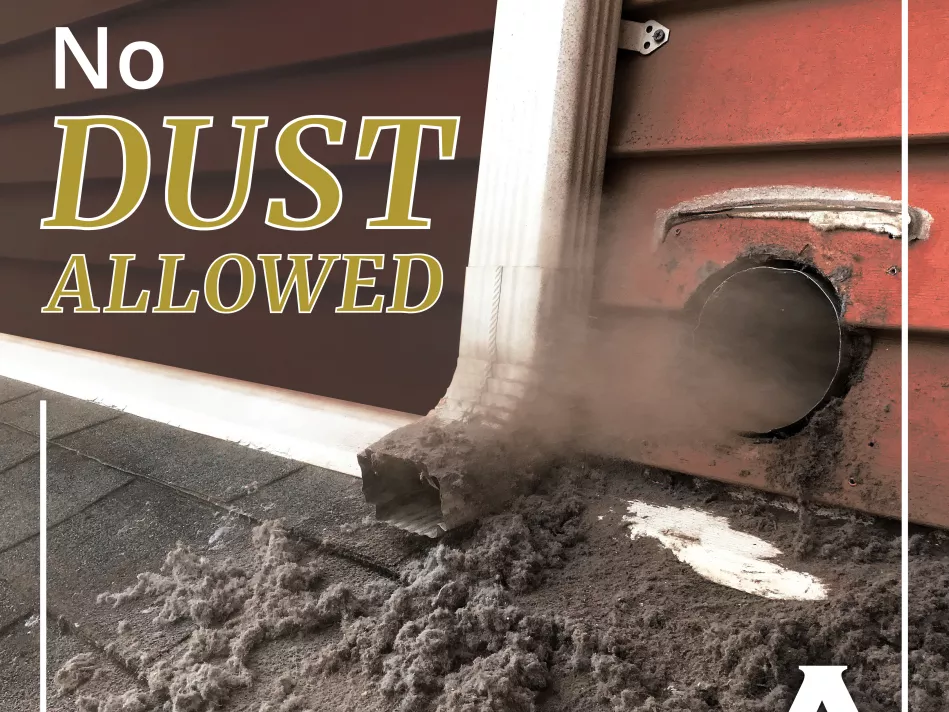For many, cleaning your dryer means tapping out the lint screen before or after each cycle. Did you know your dryer has a vent that needs to be cleaned, too? Let us be your guide, helping you keep your dryer vent lint free and clear.
What does a dryer vent do?
Much like what you’d guess, your dryer vent is the duct system that serves as the escape route for the moisture, heat, and lint coming from your machine’s drying cycle. The release of these three products during or shortly after drying clothes reduces the risk of mold growth, carbon monoxide exposure, and fire hazards.
Indoor dryer vents
To check for an indoor dryer vent, look for yours to be hooked up to one of the following ducts or vents:
- Vinyl or plastic vent: More common in older systems
- Aluminum foil duct: Widely available; cost effective
- Rigid metal duct: Best airflow
- Semi-rigid duct: Better airflow than aluminum foil duct, but still flexible
- Periscope vent: Slim; great for dryers in small spaces
Pro Tip: Vinyl vents are no longer recommended, as they are now a fire risk. If you’re in the market for a new one, consider upgrading to one of the other types available.

Outdoor dryer vents
Your outdoor dryer vent should be attached to one of your home’s exterior walls, and they’re usually come in one of the following forms:
- As an open vent
- With (often adjustable) vent flaps
- With a cage cover
Cleaning your dryer vent
Now that you’ve located your dryer vents, it’s time to make them look like new! How often are you supposed to clean your dryer vent? To remove blockages and help prevent dryer fires, clear out your dryer vent at least once a year (more often if your household has a high laundry volume or frequency).
Indoor dryer vent cleaning steps
- Unplug your dryer vent.
- Use your vacuum’s crevice tool to remove any lint or other debris from the duct or vent, gently tapping the sides to break free anything that may be stuck.
- Vacuum the vent cap setup where the duct inserts into your home.
- Clean out your lint screen, for good measure.
- Put everything back in place, and you’re ready to clean your outdoor dryer vent!

Outdoor dryer vent cleaning steps
- Use a dryer brush (which looks like a large bottle brush) to clear an easy lint or debris away from your outdoor vent.
- If applicable, gently remove the cover, as bugs can occasionally make their way into your vent.
- Use your vacuum’s crevice tool again to suck up anything hiding in your duct.
- Replace any parts your removed.
- Reconnect the dryer, and run it empty for 20 minutes to push out any remaining debris.
- Enjoy warm, clean clothes and a more efficient machine!
Pro Tip: If cleaning your dryer vent(s) looks like too big or tricky of a task, call a trusted professional.
Being delicate with your dryer
Now that your dryer vent is all clear, keep these four factors in mind to help your machine run better for longer!
Exercise load limits
When loading your dryer (or your washer), leave room for clothes to move around the drum as it rotates. An overfull load run twice won’t be as clean or as dry as two regular loads run once.
Build in breaks
Even on laundry day, giving your washer and dryer 20 minutes in between loads can prevent your dryer from overheating or being overworked, helping you stave off costly repairs.
Machine dry only certain materials
Clothing that is not designed for the dryer can really damage it over time. Avoid machine drying garments with embroidery, sequins, or glued-on appliqué.
Not only can this type of clothing become damaged during a tumble in the dryer, but pieces can also come loose and ruin other clothes or the machine itself. These and leather items are best cared for by air drying them in a space with good ventilation, away from direct sunlight.
Pre-remove pet hair
Not everything comes out in the wash. By lint rolling your clothing before running it through your washer and dryer, you reduce the chances of it accumulating in your dryer and causing a blockage or fire.
With this guide in your back pocket, you can help your dryer stay free of dirt and debris for years to come!

